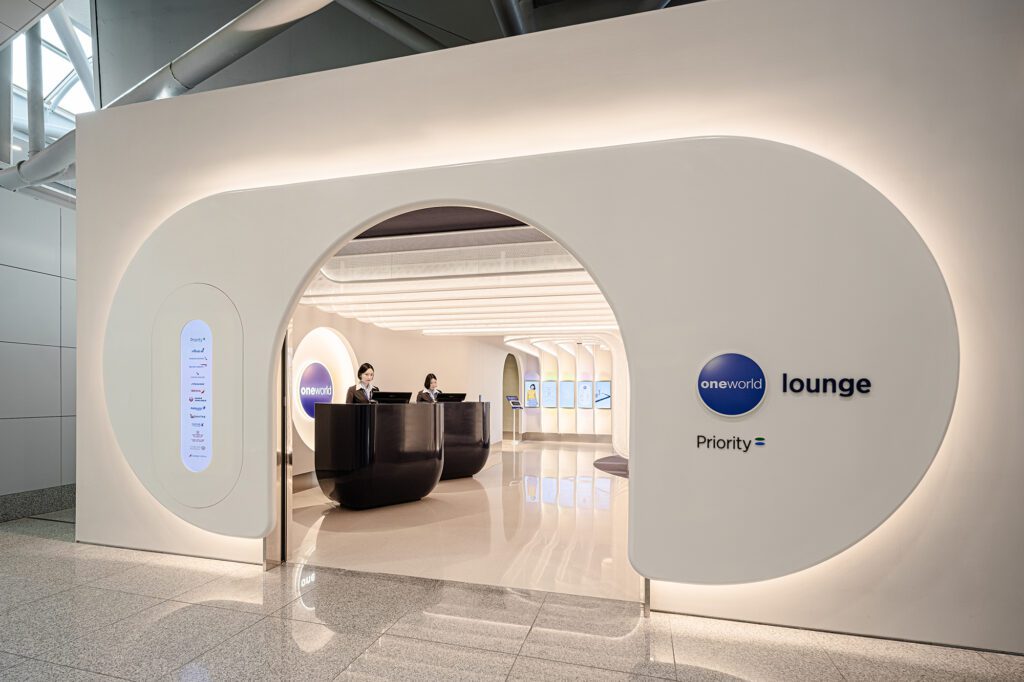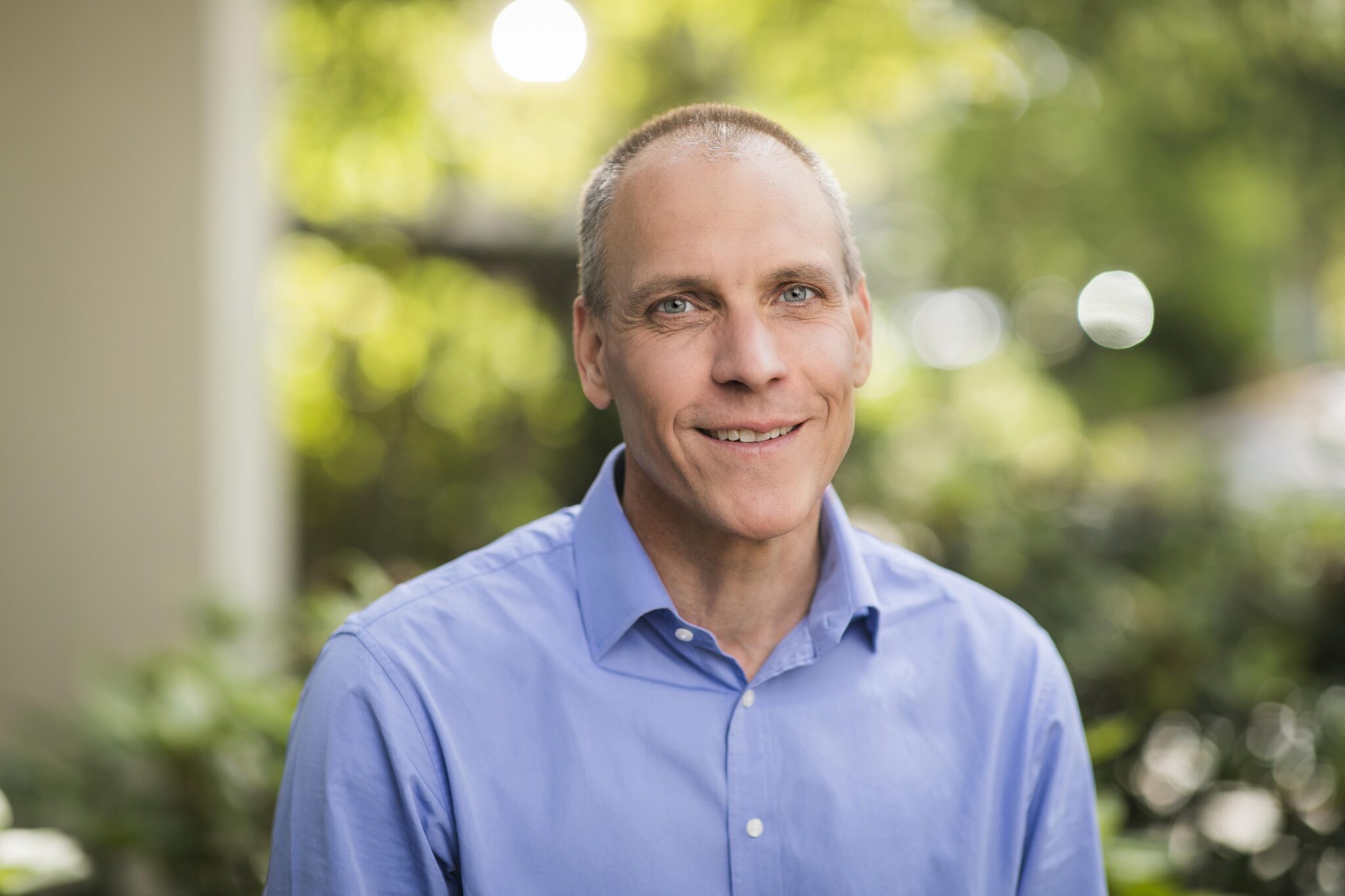If you thought running one airline was hard work, imagine keeping track of 13. Thatâs the role of Nat Pieper, the new CEO of the oneworld alliance.
He joined the organization in April and is tasked with navigating a seemingly endless roll-call of internal and external challenges. With 27 years of industry experience, Pieper is no stranger to the twists and turns in the airline business.
Oneworld, along with the Star Alliance and SkyTeam, is one of three major airline groups. Most, but not all, of the worldâs biggest carriers belong to one of the trio, with oneworld counting American Airlines, British Airways, Qantas, and Japan Airlines among its global members. If you want to know more, check out this handy Skift explainer.
Before joining oneworld, Pieper was SVP of fleet, finance, and alliances at Alaska Airlines. Rather appropriately, he oversaw the carrierâs entry into the organization in March 2021.
Other notable career nuggets include executing aircraft transactions valued at more than $9 billion and securing access to $5 billion in liquidity to ensure Alaska Airlines remained viable through the pandemic. Before joining Alaska, he held executive positions at big-name brands including Delta Air Lines and Northwest Airlines.
As the alliance celebrates its 25th anniversary, Skift sat down with Pieper to discuss everything from boardroom diplomacy to new airport lounges in the latest of our Leaders of Travel: Skift C-Suite Series.
The Definition of Success?
Skift: You report directly to the allianceâs Governing Board, which is comprised of the member airline CEOs. How does that differ from your previous jobs?
Nat Pieper: This is the first job Iâve had where the definition of success was not overly clear. Let me put it this way â when youâre the treasurer of Alaska Airlines during the pandemic, your objective is pretty simple: Go raise as much cash as you can. Donât run out of money. When Iâm running the fleet for Delta and we need to revitalize our widebody aircraft, you figure out your problem. You know the candidate aircraft, put an RFP [request for proposal] out there, negotiate, analyze. Here Iâve got 13 bosses. Theyâre all aligned in that we want to make oneworld better, but as the new CEO, I have to go figure that out.
In recent weeks Iâve been meeting the CEOs and their teams to help understand what this means to them. I hear it in the first person and then try to distill everything. I canât say Iâve got the magic answer yet, but Iâve got a lot more information and certainly a lot more things to think about.
Do you acknowledge that your new role requires interpersonal and even diplomatic skills to be able to bring together airlines that may otherwise be direct competitors? The airlines might broadly agree on the goal, but not necessarily how you get there?
Itâs a great question, and for someone who considers himself an introvert, it certainly is interesting. Most of my colleagues who are long-timers in the airline industry are problem solvers. My background is math. I tell my team all the time – and even shared with the oneworld CEOs – that my Mom was an algebra teacher. Thatâs where I start. Itâs math, itâs analytics, itâs how you start solving this broad problem. You start with the facts and numbers and take it from there.
Having 13 different bosses, as well as multi-party arrangements, bilateral agreements, joint businesses, and interline relationships is fascinating. Trying to manipulate, negotiate, and balance through all of that. Across all of my jobs, thereâs always been a strategic component and thereâs a lot of strategy here too. Itâs not only figuring out what are the buttons that we actually can push to solve problems but what is the sequence that we push them?
New Airport Lounges
Oneworld opened its first new format lounge at Seoul Incheon earlier this year, quickly followed by Amsterdam Schiphol. What are your quantitative ambitions for the lounges? Do you have a particular number in mind or particular cities for expansion?
I donât know if thereâs a magic number. Again, it comes back to how do you make oneworld more viable and more relevant to each of the member airlines? There are a number of initiatives where scale matters and lounges are in that camp.
Weâve received good feedback so far on Amsterdam and Seoul and I can tell you weâre looking at another five or six, but a big part of it is needing the dominoes to line up. You need a willing airport, a third party that will operate it for us, and you need space. Places on the candidate list include Jakarta, Rome, and Istanbul. The reason we do it that way is you donât know when the opportunity is going to knock, so we filter it down. Weâre encouraged with the results so far and weâd love to have five or ten up and running over the next couple of years.


New Member Airlines
Weâve covered global lounges and your ambitions there. What about geographic gaps more broadly? Oneworld doesnât have a single member carrier in mainland China and nothing in India. As the two largest global populations, if not economies, does that worry you?
Worry is probably too strong of a word. I start by asking where are the places in the world that our most loyal guests want to go and do we have adequate member capacity to get them there?
We have a team internally that runs these questions all the time. China and India are at the top of the list. But the thing we look to do among our oneworld members is cover these areas organically. Royal Air Maroc in Africa is a great example of that. Cathay into mainland China is another example.
Going back once again to my roots, you start with math. Okay, there’s a white space, mainland China, let’s say. If you were to add âCarrier Aâ to the alliance mix that we have today, how much of the demand that’s out there that you can’t serve today would you pick up? And then most importantly, it’s a zero-sum game. You’ll stimulate some demand, but for the most part, it’s zero-sum.
Where does that share come from? If it comes from non-oneworld Airlines, it might make sense to add that carrier. If the share comes from oneworld airlines, you’ve really got to look at that closely. That’s why adding organically is a good first priority, and only then, if you can’t cover it with additional organic growth, then you start looking at outside providers.
Last month we learned that Fiji Airways is being elevated from Connect status to a full oneworld member. Does that mean the Connect format is going away, or is it actually an example of the Connect format in action, the fact that Fiji was able to graduate up?
It’s a yes and a yes. It proves that the Connect format worked. Member airlines got to understand and work with Fiji Airways and see the value of having them as part of the alliance. It certainly contributed to our leadership team and gave us good ideas. It will also make the joining process easier for Fiji Airways because they have existing ties that they’ve built over the previous five years.
That said, it can be pretty hard to explain to a guest what a oneworld Connect member means versus being a oneworld member. Even at Alaska Airlines, before we joined oneworld, the initial discussion was around oneworld Connect. We concluded it just didn’t really make a heck of a lot of sense. It’ll probably be sunset for oneworld Connect.
The Big Industry Trends
Looking more broadly at the industry, what are your key trends and predictions to keep an eye on over the coming 12 months?
The revenue outlook for the summer looks really healthy. It feels like the post-pandemic ârevenge travelâ game has run its course. But now the one consistent trend from it seems to be folks willing to spend their dollars on experiences versus on hard goods.
I think that continues to fuel a lot of it. Itâs the experience of going to see things in person, versus buying another TV. I think people are biased towards airplanes and we’re seeing that in the really strong [airline] performance.
You suggest that ârevenge travelâ is starting to fizzle out. Do you think premium leisure is also a short-term trend, albeit with longer legs, or is it a case that once passengers get a taste of the premium product they rarely go back?
I think itâs seemingly part of the growth of experiential preferences. Instead of buying that TV, not only do I want to go on a trip, but I also want a more premium travel experience. Hereâs why I see it as more of a longer trend: Airlines take airplanes out of service for several months to do big maintenance checks. This happens around once every ten years. That’s also the logical time when airlines look at the configuration on that airplane. They ask if their mix is still appropriate. Do I have enough premium seats versus economy seats?
Talking to colleagues, and counterparts at other airlines, the configuration decisions are such that everybody is biasing towards more premium. You don’t reconfigure airplanes overnight, so if you’re making the investment in more premium seats, you’re going to fly that for five to ten years. Airlines have done the math and are banking that itâs a trend that is going to continue. Maybe it’s not a trend anymore, maybe it’s just reality?
This interview was edited for clarity and length.
Read more from our new Leaders of Travel: Skift C-Suite Series here.
Airlines Sector Stock Index Performance Year-to-Date
What am I looking at? The performance of airline sector stocks within the ST200. The index includes companies publicly traded across global markets including network carriers, low-cost carriers, and other related companies.
The Skift Travel 200 (ST200) combines the financial performance of nearly 200 travel companies worth more than a trillion dollars into a single number. See more airlines sector financial performance.
Read the full methodology behind the Skift Travel 200.

